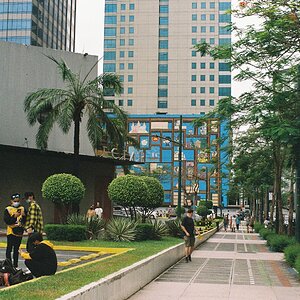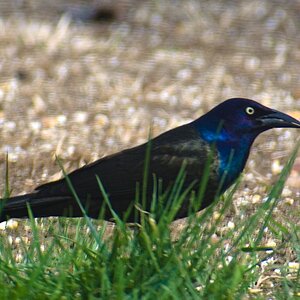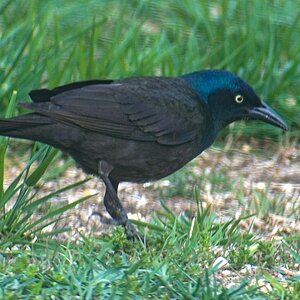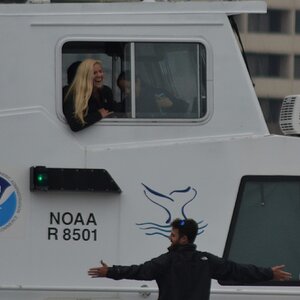Helen B
TPF Noob!
- Joined
- Sep 16, 2007
- Messages
- 3,296
- Reaction score
- 467
- Location
- Hell's Kitchen, New York
- Can others edit my Photos
- Photos NOT OK to edit
The amount of reflected light which reaches your lens decreases the further away you are from the subject.
I think we have all agreed on that.
This can be easily demonstrated by fitting a manual zoom lens and setting your camera to A priority. Choose a subject, set your aperture and make a note of the calculated shutter speed. Now zoom in and out without changing the aperture and you'll notice that the shutter speeds will be recalculated by the camera's metering system. To keep the shutter speed the same as the original setting, you have to adjust the f-stop.
Have you read my explanation earlier in this thread about why you do not need to adjust the exposure settings at constant f-number? If you find that you have to adjust in practice, then something else is going on. The meter might be reading a different area, most likely.








![[No title]](/data/xfmg/thumbnail/42/42275-2ca41f93a172e2e510afb46912a2bb61.jpg?1619740084)
![[No title]](/data/xfmg/thumbnail/35/35264-5ade32b7036391926536661aeb7491c3.jpg?1619736969)


![[No title]](/data/xfmg/thumbnail/35/35870-e324e80cd11d99176357e12cd2ba3b8a.jpg?1619737196)

![[No title]](/data/xfmg/thumbnail/42/42272-c0d91b9d0872bcdfbcdfb5bb0529e302.jpg?1619740081)